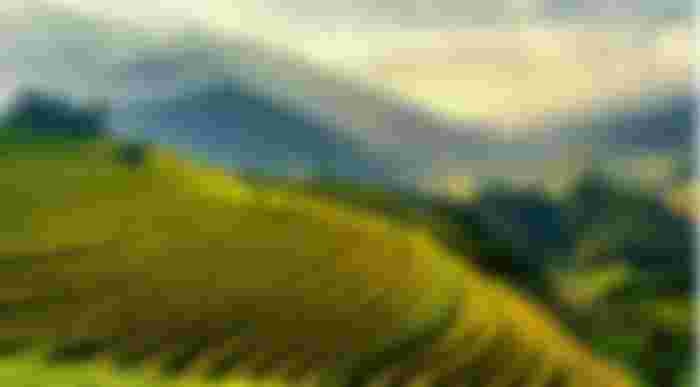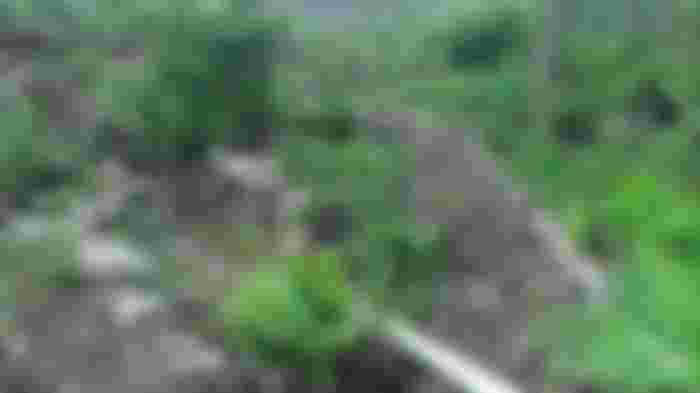Once we look at the plot and have a fair drawing of the topography, the light, wind and how the water runs, we get to the second stage.
In this second stage we will choose how to modify the topography so water moves slowly and get to the places we want. Designing the water flow can be very simple or very complex depending on the size of the garden, the initial material, our imagination and the budget.
(Don't run to dig trenches after reading this, we still have more designing to do before touching the land.)
Middle size plots
Lets suppose we have a plot off the grid with no rivers or streams crossing them, and only rain water to serve our purposes.
In this case we will have to create the whole irrigation system for the plot. To do it we go to the drawing of the topology and locate the higher point. Exactly on that point we will create our artificial lake.
Ok... here is where I said it can be as complex as we can afford. The lake can be a real lake, a big construction or it can be just a small hole made with a kid's shovel. From that top point we will create a swell that will meander along our land en-contour--that is perpendicular to the slope of the ground. If you are not familiar with the idea, think on on someone skiing, if they go in a straight line they go dazzling fast and if they go in zigzag they go slowly. We want that effect, to slow down the water as much as possible so it has time to sink in the ground before leaving the property. The best proposed system I've seen so far is to do it en-contour.
This is an adaptation of an old technology. I'm sure you have seen at least photos of terrace farming.

Two things to consider here: you can do swells by digging or adding material. Both options have the same effect.
The other important element is how to connect the different trenches. Ideally we want one to fill up before the water goes to the next one, so we have to open connections between one and the other in such a way that a whole swell fills in before letting the water move on. The most efficient way I've seen so far is at the extremes in zigzag and at a higher level from the depth of the trench.
If the land is big or it has many "hills", we can make more of these artificial lakes in key places.
At the bottom of the property we will collect all the water that arrives there in a circumvent sink, before letting the excess water leave.
This system has three key elements: it has a reservoir of water at the top, it has a reservoir of water at the bottom, it forces water to move slowly and get absorbed by the ground as much as possible before leaving the property.

Some people add to this pumps that will take water from the bottom reservoir to the top one in times of draught.
Small urban gardens
If we have a small urban garden we can think at first sight that this will not work. Actually it does. We can still make swells to collect water, we can have one or more ponds as part of the design and we can and should force the water to move slow to avoid erosion and keep as much if this vital element as possible.
Another important thing to do in an urban setting is to collect roof water. Whether there is municipal water or not around, rain water is always the best option for our garden.
What to do once we have our swells?
Now, if you read my article Black gold is not oil, it's soil, and maybe if you didn't, you might be seeing a contradiction here. I said that the soil had to be covered to protect it's living force, and now I'm proposing to just cut through and make a mess of things.
True. There are many ways to do what I said and still protect the soil. One is to cover it immediately with organic matter-- straw for example or garden clippings. The second is to seed it with fast growing easy to remove plants--clover comes to mind but each area will have it's best combination. The last option I'm going to propose here is to make the swells not by digging but by going high around it. An example of this would be to use hugelkulturs.
Hugelkulturs are planting structures based on wood and organic material covered in soil and the soil covered by straw. These structures have amazing water retention abilities and release nutrients at different speed, not needing amendments for long periods of time, in some cases up to ten years.
Now. We are still not ready to start digging. First we need to separate the plot in zones. That will come next.
Thanks for reading.
All comments are highly appreciated.
Images:
Img 1: Photo by thanhhoa tran from Pexels
Img 2 and cover photo: taken from the Pearmies forum. This thread: https://permies.com/t/43055/good-pictures-hugelkultur-beds-article


Greetings, I find the article very interesting, I learned some things I didn't know and I am very happy with it.